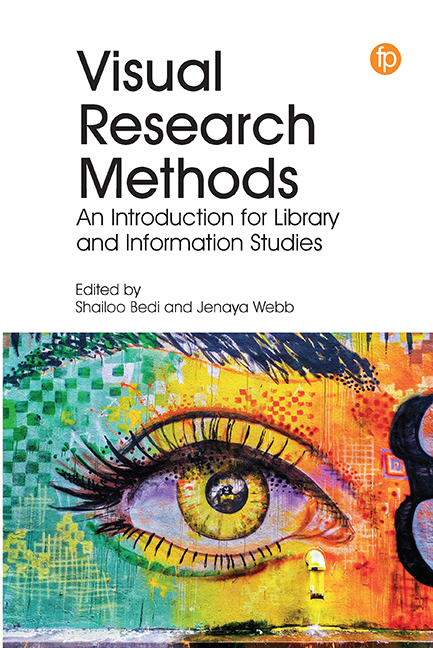3 - Librarian, Illustrated: The Draw-and-Write Technique as a Visual Method for Libraries
Published online by Cambridge University Press: 07 November 2020
Summary
Arts-Informed Research
Hooray! At long last, a kaleidoscopic sea change is under way in the world of research. In the past, research involved answering formal questions through a systematic process of variables, hypothesis, units of analysis, sampling, validity and reliability, among other daunting concepts. Data sets, almost exclusively composed of words and numbers, were then analysed and assembled into a report to be read by a handful of decision makers – precluding those who contributed to the research and community members, too.
Within the realm of research paradigms, this most welcome breath of fresh air is called arts-informed research (Knowles and Cole, 2008). It combines the systematic and rigorous qualities of conventional qualitative methodologies with the artistic and imaginative features of the arts. The central purpose of arts-informed research is to enhance understanding of the human condition through alternative processes and representational forms of inquiry and to reach multiple audiences by making scholarship more accessible (Knowles and Cole, 2008). Emerging from the field of education in the 1990s, these creative approaches have spread across the social sciences and into several professional domains. Perhaps a founder of this movement was Pablo Picasso, who said that he never made a painting as a work of art; rather, the process was always research. Undoubtedly, hasn't everyone felt moments of keen insight when gazing on a painting, reading a poem, attending a play – or when creating such expressions?
Arts-informed methods may be grouped into three main types (Mannay, 2016; Pauwels, 2010). Studies of found materials involve researchers as collectors and observers of artworks. In researcher-initiated productions, researchers become the creators of art, whether by holding a paintbrush, camera, pen or other instrument. For participatory productions, the researcher-informant relationship is relaxed and a spirit of collaboration imbues a hands-on, dialogic discovery process. While any of these types hold promise for libraries, the last of these three, the participatory mode, is described in the chapter ahead.
Research projects in the arts-informed spirit may entail poetry and creative writing, musical production and performance, sculpture with myriad materials, and dance and movement, too. The most prevalent modality has thus far been the family of two-dimensional visual arts – painting, drawing, collage and photography.
- Type
- Chapter
- Information
- Visual Research MethodsAn Introduction for Library and Information Studies, pp. 53 - 82Publisher: FacetPrint publication year: 2020



